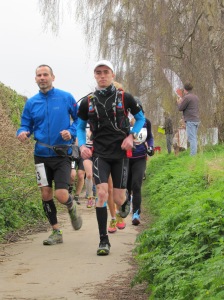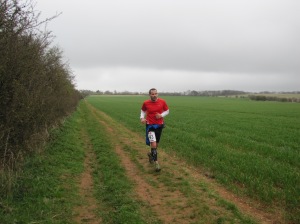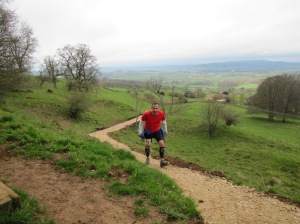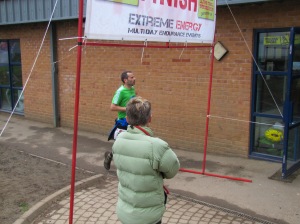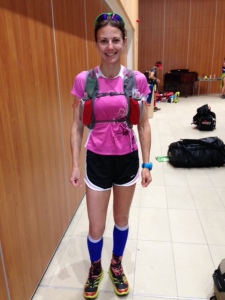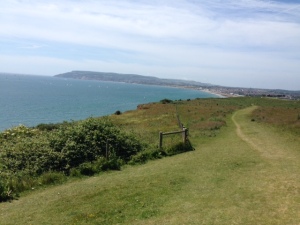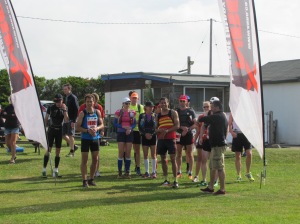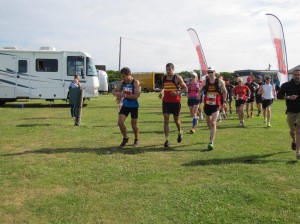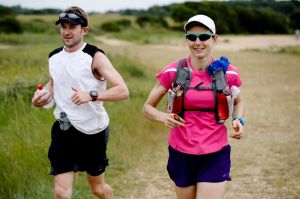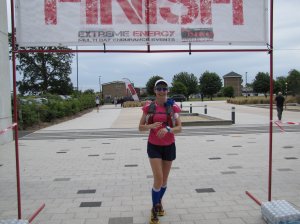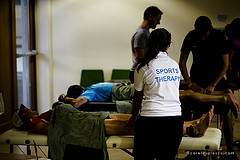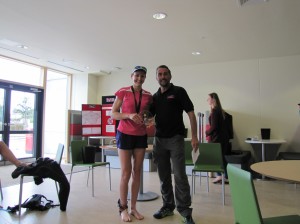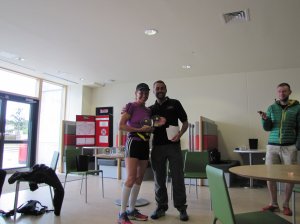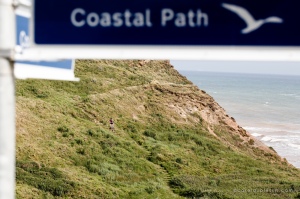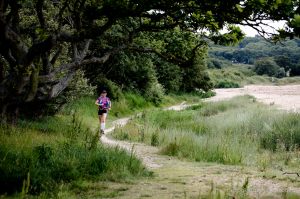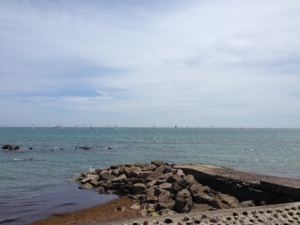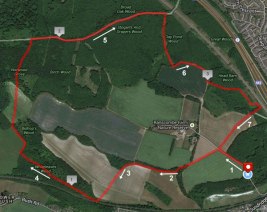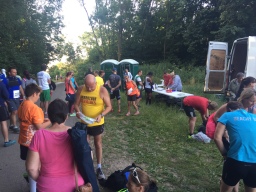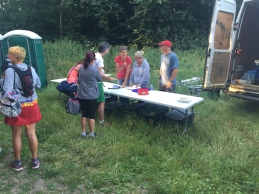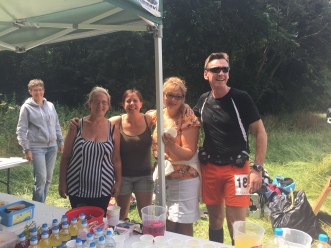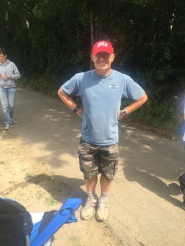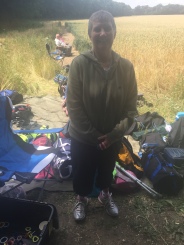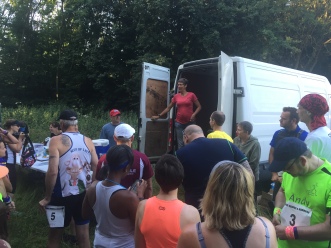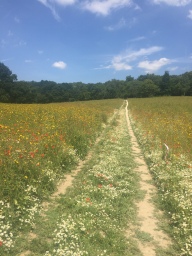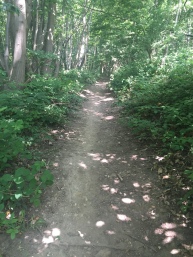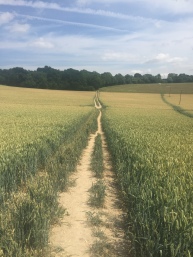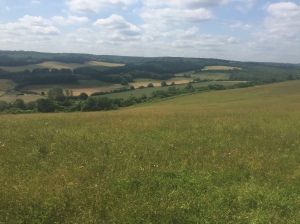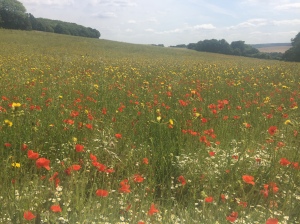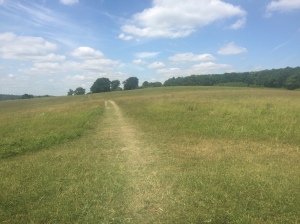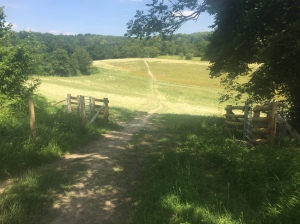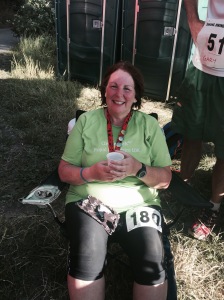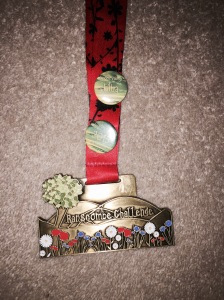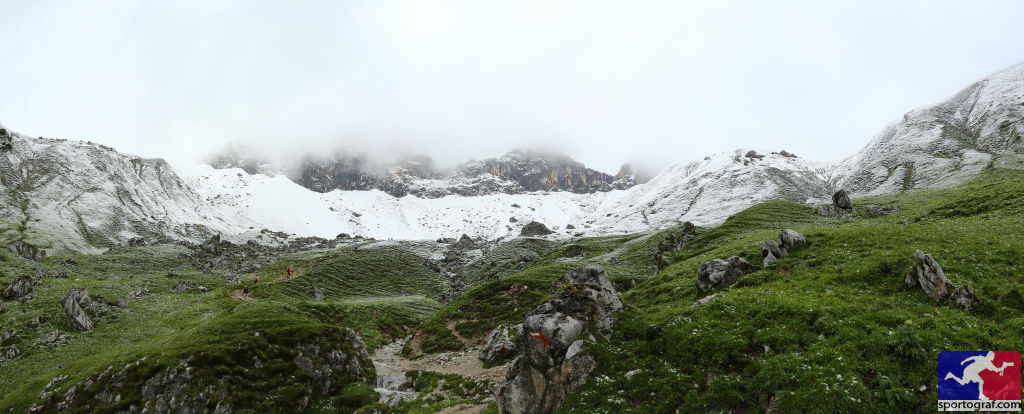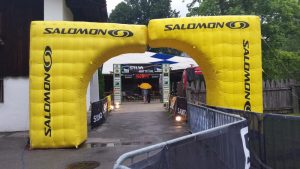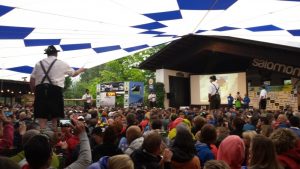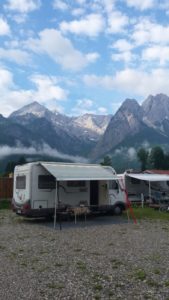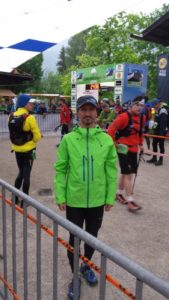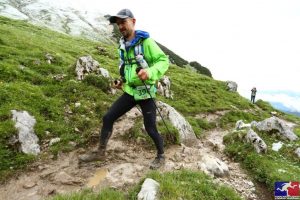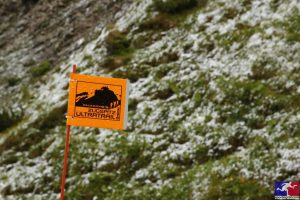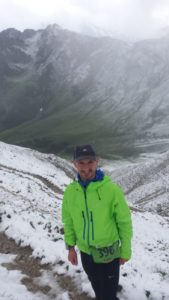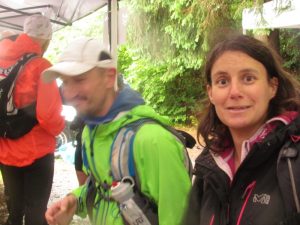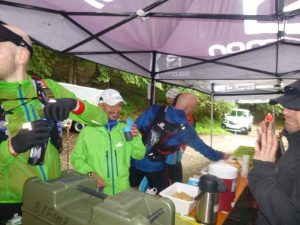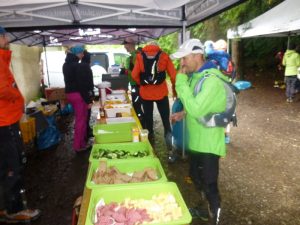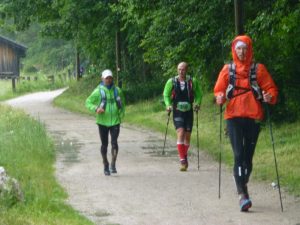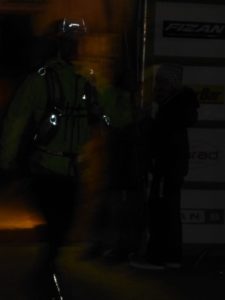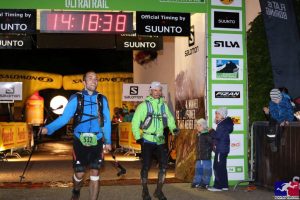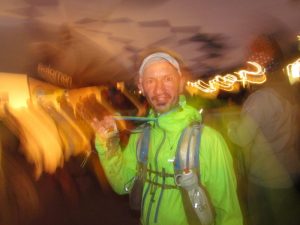Written by Ryan Shaw
Before the Race
I left the UK on Wednesday 4th February, from London Heathrow. This flight took me to Vancouver, Canada, where I had to transfer to another internal fight to Whitehorse, which is where the race would start. It was a long journey, getting to the hotel at 1:30am, on the morning of Thursday 5th February.
Fortunately, Thursday was a free day for me, so it gave me a chance to get settled, sort my kit out, and meet a few of the other competitors. I also took the opportunity to purchase some final equipment, including snow shoes and Neos Overboots, the latter of which would come to be a sensible and needed purchase. The real pre-race work would start on Friday with the start of the cold weather course that was mandatory for me to attend, due to my lack of cold weather race experience.
PRE-RACE COURSE
The course on Friday was a mix of classroom work and practical. We all introduced ourselves and were given the opportunity to air any of our concerns,
fears and general questions about the race. The biggest unknown for me, and I wasn't alone, was the potential for overflow (water from many possible sources that spilled over an already frozen surface), and it it could or should be negotiated. The last thing I wanted would be to get wet. We were talked through the route and what the potential conditions may be like. We already knew, based on the weather forecast, that the first couple of days were going to be very hard. This would lead to a slightly modified practical part of the course as the organiser wanted to be as sure as he could be, that we could look after ourselves and stay warm in such conditions. Other topics covered included the psychology aspect of such a race and dealing with sleep deprivation, exhaustion and nutrition. I would learn my own hard lessons later in the race around all 3 topics. Finally, the medical side was covered,
potential issues that may arise, and what could be done to help resolve or treat them. Frostbite was a clear concern to the organiser, particularly with the forecast ahead of us. With the temperatures being talked about, frostbite could occur within minutes on any exposed skin. It would be instant if you spilled stove fuel on your skin. The practical part of the course started after dark. As a group, we walked about 4 or 5 miles down the trail, into a wooded area. This is where we would be tested, to prove we could use our stove, light a wood fire and understand and use our sleeping system. The modified part of this course was to spend at least 30 minutes within our sleeping system, to be comfortable with it and to get a feel for how warm, or not, we would be. This would become essential during our first 2 nights of the race and enable us to plan ahead if we became too cold once the race had
started. What would you do?
The results of the course were mixed. Some people had trouble starting fires, some had sleeping systems not up to standard, and they would be forced to "upgrade" to something that would be warmer and safer. Unfortunately, one competitor, unknowingly, got some fuel on his finger because of a hole in their glove. This would need to be evaluated by the medical team prior to the race as, the rules stated, that under no circumstances, would someone with frostbite be able to continue. The reason for this is that once a frostbitten body part is unfrozen, things get much, much worse if it refreezes and, of course, there is no guarantee that it couldn't be protected in that way.
Robert, the race organiser, summarised what he saw during the practical, the following morning. He's very open, honest and basically said things needed to improve. If we took as long as some people had done in lighting fires etc. when it was an emergency situation, we would die. Those kinds of messages were drummed into us. It certainly brought me down to earth with a bump and added an extra level of anxiety and nervousness. This was real, and the conditions we were about to literally walk into, could kill you if you didn't think or react quickly enough.
SATURDAY AND THE PRE-RACE DINNER
Saturday morning saw the start of the Yukon Quest. This is the 1000 mile dog sled race from Whitehorse, Canada, to Fairbanks, Alaska. This race lays the trail that we would be following on Sunday for our race. I wandered down to the start to see the dogs off. They were much smaller than I expected; not the traditional husky breed that I has expected.
Saturday evening saw all the athletes gather together as a group for a final dinner before the race started on Sunday morning. More information was shared about the current trail conditions. The trail itself varies every year, based on the conditions of the rivers and lakes in particular, and how well frozen they are in places. This could lead to differences in distance too in some cases. Yet again, it was pressed home at how difficult the conditions were going to be for the first 2 days. If it got too cold at night, it could become mandatory to stay with someone. That would enable you to help each other should any trouble ensue. It's a discussion that didn't help reduce the nervousness or anxiety at all; I honestly think I was scared about what could lay ahead. After all, this was still an environment I had no real active experience within, other than the previous days training course. Let's just get on with it!
Whitehorse to Rivendell
RACE MORNING PREPARATION
The morning of Sunday 8th February. This was the day that the last 8 or 9 months of preparation had been all about; the start of the Yukon Arctic Ultra, 2015. I was in the 300 mile race, along with 17 other athletes. 85 athletes would start in total, covering different distances; in addition to the 300 I has entered, a standard length marathon, 100 miles and 430 miles. I, and most other athletes, would cover their distances by foot, however, a smaller number had chosen to use cross-country skis or fat bikes. Fat bikes are amazing to look at. Their name, I think I can fairly confidently assume, comes from the fact that they have super fat tyres to provide the traction they need for the snow and ice. I woke early, at 6:30am, as I wanted to make sure I ate well before the start of the race at 10:30am. 4 eggs sunny-side up, bacon, potatoes, four rounds of brown toast, a side of pancakes, a splash of coffee, and plenty of water. The butterflies fluttering in my stomach made it difficult to consume, but I forced myself. Although I would get 1 hot meal at each of the 7 checkpoints through the race, this would be my last opportunity to consume as may calories as possible. It was estimated that I would be burning 10,000 calories a day, maybe more, potentially for the next 8 days. So very quickly, I would fall into some kind of calorie deficit. It wouldn't be possible
for me to eat that much food while racing although I had to eat as much as possible to keep the body and mind sufficiently happy.
The night before had been spent organising my drop bags. I had 3 bags which would be stationed at checkpoints about 100 miles, 175 miles and at the end of the race. They could contain anything I thought I might need, but were primarily used for extra food which I could pick-up along the way, and spare clothes and batteries. I dropped these off at the collection point the night before too, so that they could be transported to the necessary locations. Immediately after breakfast, I filled 4 small vacuum flasks with 2 litres of boiling water, and a 2 litre water bladder with water at room temperature. The water in the flasks would be carried in my sled and need to remain unfrozen between checkpoints, which is why they were filled with boiling water. I would wear the bladder over the top of my base layer on my back, so my own body temperature would keep that from freezing. It would be accessible through an insulated pipe which I could suck the water through.
During my earlier breakfast, I had been chatting with a fellow competitor. Rather than load our sleds onto a van for transportation to the start line, we agreed to walk, sleds in tow. It was only a 15 minute walk, the same location from where the Yukon Quest has started the day before. We left at 9:45am to give ourselves plenty of time with the start being at 10:30am. That's when the first of my problems started. On the walk down, the hauling shaft
of my sled came apart. This is used to connect the sled to the harness, which in turn connects to me. The piece of the shaft failing was 2 aluminium poles joined together with a spring loaded pin. This "failure" hadn't happened during the 3 or 4 hours I'd been out during the practical of the training course, so I didn't think much of it, rejoined the poles and continued to the start line. The same thing happened twice more before I arrived at the start and was very quickly becoming a concern. We hadn't even started yet and the equipment was failing. I had no spare pin, so there was nothing I could do immediately, and hoped it would somehow magically rectify itself.
THE START
The race started promptly at 10:30am. We put our trackers into track mode and departed. 300 miles to go! We'd been informed the media would be there, including Al Jazeera and a Japanese film crew making a documentary about the event. And there they were, right by me as my poles split apart again, 2 minutes after the start. After the 5th time within 10 or 15 minutes of the start, I had to do something. I wouldn't be able to continue like this. I took the complete hauling shaft apart and rebuilt it, but it soon failed again.
Duct tape fixes anything, or so I thought. That was the next option that I considered. It usually sticks anything and everything, but the stickiness had
completely disappeared at the minus 30 Celsius temperature, or thereabouts, that the race had started at. Trying to remain calm and not panic, the only 2 athletes left behind me approached, but stopped to see if they could help. They couldn't, but suggested I return to the start to try and get the issue resolved there. I decided that wouldn't help me and then that's when my last minute shopping a couple of days earlier first came to save me. I had seen a rope, thought it might come in handy and bought it. That handy moment had arrived. I removed the hauling shaft as quickly as I could, cut it to an appropriate length, and attached the rope to the sled and the harness. The simplest, almost fail safe solution. Keeping my emotions under control, I restarted and soon started to catch up with the back markers, and on my way to the first checkpoint; the marathon finish at Rivendell. Once I had gotten into my stride, I was feeling comfortable. The emergency sled repair seemed to be working well. I could see a little commotion in the distance, and as I approached, one athlete had become ill. He was being looked after, and presumably his tracker help button had been pressed, so help would've already
been on its way. As I approached half-way to Rivendell, I found an iPhone laying in the snow. I was glad that I had left mine behind in the hotel; I felt I would end up losing it if I had taken it, and it wouldn't be usable most of the time anyway. I handed the iPhone to support staff to hopefully find its owner.
There was little further drama throughout the remainder of the first 26 miles, for which I was grateful.
Upon reaching the checkpoint, it gave me a good indication as to how they would be run. You were not allowed inside, so I had to strip down to my base layer to remove by water bladder. It had been a little annoying to wear and made be overheat, so I decided to dump it. That left me with only with 2 litre capacity of the vacuum flasks, but I wasn't going to stress about that now. If needs be, I'd melt snow or ice on route if I did ever run dry.
A volunteer quickly serviced me with a bowl of soup, a sandwich and a brownie. Hot chocolate was my drink of choice. I was only 26 miles in, and this
was already very much appreciated for, if nothing else, its warmth. The air was turning colder, and before deciding to head out again, I warmed myself by the open log fire and dried my gloves. Discussion with others around the fire focused on the coldness of the coming night. I and another athlete had talked earlier before the race, and we confirmed and agreed around the warmth of the crackling logs, that we would stick together after leaving Rivendell, and into the darkness of the night. The reason for staying together was primarily for safety, due to the expected extreme low temperatures and associated government warning, but it would be nice to have company during the first night too.
Once we had both warmed sufficiently, we both made our final preparations for departure, and left down the trail towards the second checkpoint, Dog Grave Lake.
Rivendell to Dog Grave Lake
The person on the training course who had spilt fuel on his finger scratched at Rivendell. That was sad, but probably sensible. I don't know the details, but we were heading into the coldest of cold nights and probably not the best environment for an already frostbitten finger.
We (my new trail buddy and I) left Rivendell into the darkness of the night, heading towards Dog Grave Lake. I’m not sure I wanted to know why this location was named as such, so never did ask.
I led our convoy of 2 to begin with. I really wanted to try and reach Dog Grave Lake before taking any further break or any sleep, so I got a bit of a march on, but I was committed to staying with my fellow athlete during the night. It would be good for both of us in case either of us got into trouble. We were there to look out for one another. It certainly gave me peace of mind. There was little chatter along the way; it was heads down and get some miles under our belt, stopping occasionally to rehydrate and to snack on something, although that probably wasn’t happening as frequently as it should have. It was those snack breaks where most of the chatter took place.
As we continued, we caught up with, and started to pass, another fellow athlete. He asked if he could tag along with us which was fine. I didn’t know if he was just lonely and wanted some company or whether he was struggling. Either way, we were a convoy of 3 now which didn’t seem to last long. He dropped off of the back fairly quickly and with hindsight, I feel a little bad about that now. He’d asked to stay and tag along with us, maybe we should have waited for him – go as fast as the slowest person – but that didn’t happen. Our paths would pass again though.
The batteries in my head torch lasted an atrociously short period of time. Thankfully, I didn’t need to fumble in the darkness for my backup torch as I
had the light from my new trail buddy. The battery pack was on my head, which made it difficult to keep warm to extend the battery life. I swapped out the batteries, rather than swapping to my backup torch, and we carried on. The order of our convoy swapped too, so I would take up the rear and have the pace set for me.
The description doesn’t do it justice, but it was turning into an extremely frigid evening and night. It was clear we would never get to Dog Grave Lake before daylight, so at about midnight, we made the decision to bivy down and get some rest. I was unsure how that might work out considering that by now, the temperature had reached -50 Deg C!
I carried a tent which, once I had trodden down the snow just off of the trail, I erected quickly and laid out my sleeping system inside. My trail buddy, now also became a bivy buddy :). She didn’t have a tent, but a bivy bag. It’s essentially a giant waterproof bag that your sleeping bag sits within and you zip yourself completely inside to protect you from the outside elements. It’s probably not a great environment if you suffer from claustrophobia, but seemed a popular option for many athletes.
We agreed that we would sleep, or try to sleep, for 4 hours. After crawling into my tent, I stripped off my top layers down to my base layer, removed my shoes, leaving them in my tent, and zipped myself into my sleeping bag. The clothes I took off stayed in the sleeping bag with me. The sleeping bag had a comfortable sleep rating of -24 Deg C, and an extreme rating of -47 Deg C. So, although it wouldn’t necessarily be comfortable, it would allow me to survive at -47 Deg C. As it turns out, I must have been comfortable enough, at least to begin with, as I was informed later by my neighbour, that I was snoring within 5 minutes. At some point during the 4 hours, there was some commotion outside. Shouting and the like. It seems like the athlete who had fallen off of the back of our convoy earlier on had decide to bivy down at the same location as me and my bivy buddy, but was having trouble doing so. The altercation seemed to be between him and 2 other athletes trying to assist him and getting him into his sleeping system. That didn’t make me feel any better about allowing him to fall back earlier in the evening.
I was already awake when my bivy buddy shouted to me to see if I was up and ready to move on. My positive response to her saw us both buzz into action and reparing to get up, dressed again and to pack our sleep systems away. Even though my shoes had been in the tent, that was my first mistake when it came to storing equipment that I had taken off. They were frozen solid. I squeezed the 2 lumps of ice onto my feet although, surprisingly, they warmed and thawed rapidly once I really sprang into action and packed everything away into my sled. The inside of the tent had completely iced over too with the condensation that was generated from my being inside, and the cold night air mixing with the warm air from my body and breath. With our head torches lighting the way, we headed off back down the trail. My bivy buddy informed me that she hadn’t slept very well at all, and that she was very cold. I told her she should have said something to me earlier, so I could have perhaps helped. Maybe we could have made a fire. Now, she was wearing as many layers as was practical, to try and get her core back to normal operating temperature.
As the sun rose, we agreed we should not worry too much about sticking together if we both wanted to go at different paces. I trudged on ahead and the gap grew between us, but we would meet again later at the Dog Grave Lake checkpoint.
Further on down the trail, the call of nature beckoned, really for the first time. A common question I have been asked is about personal hygiene and “How do you go to the toilet?”. The answer is, quickly! :) You can’t really do anything different, you just have to get on with it. I think that’s enough detail.
The trail seemed to be never ending. Would I ever get the Dog Grave Lake? I had to stop. I needed a pick me up, so got out my stove, heated some water, and made myself some hot chocolate. It seemed to do the trick, as I seemed to get to Dog Grave in no time at all after that.
This checkpoint was nothing more than a couple of tents in a remote location, with a few roaring log fires and the chance to get a hot meal of soup and hot dogs. It also gave us the opportunity to “warm our cockles” after a freezing night and only slightly warmer day. My bivy buddy rolled in about 45 minutes after me, and she reported that she was no warmer, perhaps even colder. She did the right thing, and stood as close as she dare to one of the fires in the tent to try and stabilize and raise her body temperature.
Before doing anything else, I chose to bivy down again, to try and get some more sleep. Dog Grave became like a refugee camp in that respect. A lot of people were suffering, one way or another, the effects of the extreme temperatures and a substantial number of athletes were scratching. This included he fellow that had fallen off of the back of our convoy earlier. :( My bivy buddy was not yet sure if she would continue, and would try sleeping more before making a final decision. As it happens, she had another restless and cold night and decided to scratch. It was the right and most sensible decision for her. Continuing wouldn’t of helped her warm up – it hadn’t helped before – and she didn’t want to get into any worse situation. Nothing is worth more than your physical well-being or, ultimately, your life.
I departed Dog Grave, heading for the next checkpoint at Braeburn, which was another 35 miles down the trail. This was also the 100 mile race finish line and a checkpoint where, if you chose to do so, could sleep indoors.
Braeburn and Ken Lakes
DOG GRAVE LAKE TO BRAEBURN
I left Dog Grave Lake at about 6:30am and trudged back off down the early morning darkness of the trail. I always feel I'm missing out on something when traveling in darkness, and in this environment, I probably was. Some of the scenery I had already seen had been spectacular. A couple of hours later though, the sun was struggling over the horizon, shining a light along the trail that would take me to Braeburn, 35 miles away, and the home of monster cinnamon buns and super-sized burgers apparently.
The trail wasn't very wide, just enough for 2 athletes to pass side by side with sleds in tow. Before the sun had completely risen, my head torch picked out a couple of folks ahead. Pleasantries were exchanged; it was good trail etiquette to confirm all was well with one another, and it was almost a relief to have the briefest of chats.
I'm naturally quiet, but even I find comfort in a quick "hi, how are you doing?", when i know it's likely I'll be solo for most of the next 12+ hours, until I reach the next checkpoint.
We ping ponged a little. I passed them, they passed me. Up until reaching Dog Grave, I noted myself, and was reprimanded by my bivy buddy (in a nice way), for not drinking or eating enough. I was making a concerted effort in rectifying that because, if I didn't, I probably wouldn't finish the race. This resulted in the ping pong effect. As I stopped to hydrate and snack, they would pass. I would then pick up my pace and re-pass them.
Snacking, and what you consume, is a very personal choice. I'm almost ashamed to admit, most of my choices were very unhealthy, but did provide lots of calories. Snickers bars, which I had pre-cut into mouth-size pieces, were a favourite. I had pre-cut them because, of course, out on the trail, everything would freeze solid. Having a bite size piece I could just pop into my mouth for "thawing" before eating, made things simple. Peperami, a German salami was another favourite. They are thin enough that they didn't require the preparation of the Snickers. I could happily bite and chew it in its frozen state. Trail mix (a mix of nuts, seeds, raisins and chocolate drops), BabyBel cheese and, believe it or not, Pringles, completed the snack menu. In addition, if I wanted something a little more substantial, I carried a variety of high calorie freeze dried meals - just add hot water. Beef curry, chicken korma, spaghetti Bolognese, oats with cinnamon and raisins, all added to the variety if I felt like it.
Hydrating had started turning into an inconvenience. My dumping of the water bladder at the first checkpoint really created that, but inconvenience over body temperature control seemed like a good compromise at the time. Each time I wanted to drink, I now had to stop, open up the sled, grab a flask, drink and then put it all back again. The bladder had at least enabled me to drink on the move. I still think I had made the right choice for me though, but it was not encouraging me to drink as much as I should. I was travelling 30+ miles on less than 1.5 litres of water - not enough by far. My revised approach, because I only had a 2 litre water capacity now, was to take the hot water from the flask, and mix it with snow, to increase the overall volume of water I drank by only having to carry 2 litres. I still had the inconvenience of having to stop each time though, but was starting to get pretty efficient at it.
The skidoos, with the trail crew aboard, buzzed by a couple of times during the day, as they did most days. These, as were all support crew, were an amazing group of people. They were travelling, often hundreds of kilometres a day, up and down the trail, ferrying other support people between checkpoints, and making sure the athletes out on the trail were safe and in good health. They also led the "rescue missions" whenever someone pressed the "help" button on the satellite tracker device. Later in the day, my bivy buddy was aboard one. She had decided to scratch at Dog Grave Lake but had volunteered to support the rest of the race, was was herself being ferried to Braeburn, where she would help and assist arriving athletes.
Light was fading and it took me until almost 6:30pm, and after complete darkness had arrived, to reach Braeburn, so a good 12 hour stint on the trail to cover the 35 miles. To put that into some sort of context, back in the UK and in normal conditions, I covered 62 miles in 13 hours.
The Braeburn checkpoint was actually a lodge come country restaurant. It was basic, but warm inside; the first time in 100 miles that we, the athletes, could get inside a building for some proper warmth. In addition to the 1 hot meal we were allowed at each checkpoint, they also offered us a mattress for the night in a cabin. I had been warned it would be noisy and you might not rest well, but it seemed rude not to take up the offer, even though it was warmer than the previous night, at an almost balmy minus 43 deg Celsius :) Before sleep could happen though, and because of the severe and extreme temperatures we had been competing in, I had to be put through a mandatory frostbite check. Ears, nose, fingers and toes. All the susceptible extremities. It resulted in a clean bill of health for me. My meal was a super burger, the size of my head. My appetite wasn’t what it should have been considering the miles I had put in, and the conditions that had been endured, but I slowly forced myself to eat it all. The calories were badly needed. As I ate, I was a little surprised to see the arrival of 2 athletes I thought had scratched at Dog Grave Lake. It was a pleasant surprise too. One had been the victim of frostbite, but I guess not severe enough to continue. I was happy for them as they were 100 mile competitors and this was their finish line. They had made it, and I suddenly witnessed a low key medal ceremony for them both. :)
With the burger fully consumed, I passed on the option of a cinnamon bun which must have been the size of a football. :) I chose instead to get my head down before starting, what for the 300 mile athletes, would be the longest leg between checkpoints, 44 miles to Ken Lake.
BRAEBURN TO KEN LAKES
My stay at Braeburn was longer than I had anticipated. That's the danger of sleeping inside I guess. It was a little disruptive, as the cabins were shared, and 2 fellow athletes came in while I was already sleeping. But no complaints. 4:30am saw me depart Braeburn, back into the darkness again, led by my trusty head torch. The terrain of the trail began, much as it had continued the previous day, narrow and somewhat undulating. It should not have been a surprise though, that eventually, based on the name of where I was headed, the trail crossed open lake, after open lake, after open lake. Or certainly, that’s what it felt like. Lakes, from a race perspective, were my least favourite terrain to cross when perhaps they should have been my favourite. They were flat, the trail was mostly very firm and it was relatively easy to cross them, even with the sled in tow. But were they boring! Especially in darkness, when you couldn’t soak up the surroundings because it just wasn’t visible. That, to me, made them featureless and never ending and a mental slog. At least with the trail off of the lakes and rivers, the undulation would add interest, albeit a lot more effort at times. Albeit hidden for most of the time, you would also see much more evidence of the local wildlife, with tracks in the tree-lined trails, again, away from the lake and river trails.
In between one lake and another would be the fun part. Normally joined by some wooded area, there would also be some kind of bank to ascend or descend, depending on whether you were leaving or joining a lake. And these became very steep at times. Not long, just very steep, made all the more challenging with that sled that was in tow. This was the first time where I have to bring out the microspikes to help me. The best way to describe these are snow chains, like you might fit to your car wheels in the winter, but for feet. They stretched over my shoes and gave me the extra grip and traction I needed on some on the climbs and descents on and off of the lakes, rather than just relying on my hiking sticks and the strength in my arms to prevent me from losing control. They worked incredibly well.
The slopes on and off of the lakes added an extra problem too. The early problem I had with the sled poles which caused me to start towing with rope meant that I had no control over the sled at any downhill section. This led to a few painful moments of sled and heel colliding, and it wasn’t doing my Achilles any good. I had to avoid that becoming a problem at all costs, and I eventually found a rhythm that would help me for the rest of the race. As I heard the sled close in on me, I stepped to the side so that it could overtake me, if that’s what it wanted to do. And it did sometimes, ending up with the sled overturning as I tried to prevent it going out of control completely. But most of the time, it would run over the rope which would act as a brake, slow it down, or even bring it to a complete halt. We got on just fine once that downhill process had been refined. It was about 16.5 hours since I left Braeburn, and in the distance, I saw a bright white light. It was the head torch of one of our hosts and support crew at Ken Lake. He had come out to meet me. I assume he knew I was close from the satellite tracker. That was a nice touch.
A steaming hot Chilli-Con-Carne was the hot meal made available here, and it was the best thing I had tasted in what seemed like years. I could have eaten it 10 times over, but that was not allowed. 1 meal per athlete, period. I was, however, treated to 2, maybe 3, mugs of steaming hot chocolate. That had become my drink of choice, whenever the opportunity arose. It was time to catch some z’s before moving on. I chose a spot close to an open log
fire, but I didn’t bother with the tent. Instead, I just used my bivy bag and cocooned myself inside for no more than 4 hours before I woke up, packed my
things away and would head for Carmacks. Carmacks was the next checkpoint with a time limit. I needed to be there no later than 4.5 days from the start of the race, it was 35 miles away, and I had about 19 hours to get there.
The 4.5 Day Limit - Ken Lakes to Carmacks
35 miles in 19 hours was my target, or face elimination from the race. In fact, it wasn’t really a target at all. I had to do it in less than 19 hours; I hadn’t travelled 5000+ miles not to finish this race, let alone the hundreds of hours of training and preparation that went into it. But those were the rules. I had reached Braeburn within the 3 day limit, and now I had to be at Carmacks within 4.5 days of the start of the race. This would be my last in-race cut-off time; it would just be down to reaching the finish line within the 8 day limit after that. Based on my average pace overall so far, it shouldn’t be a problem, but you never know what challenges rear their head along the way. I would be fine as long as everything remained as it currently was.
I left Ken Lake at 2:50am after no more than 4 hours sleep, maybe less. The host who had welcomed me into the checkpoint earlier that evening, helped reorientate me and pointed in the direction that I needed to travel next. It was comforting to get that confirmation.
Orientation can be a problem, particularly after you have stopped for a rest and taken the time to sleep. Even more so, when you were on your own, bivying in the middle of nowhere. A few simple rules, if followed, help make sure you don’t end up going in the wrong direction; leave your sled pointing in the direction you need to continue to travel; point the exit of your tent (if you’re using one) in the direction of travel. Simple things, if you remember to do them, when you’re sleep deprived and hungry.
Something wasn’t right today – not what I needed with time and consistent speed being a critical factor for me today. It felt I was needing to put in much more effort to make progress down the trail. I was feeling lethargic and tired. It shouldn’t have been too surprising. I was at the half-way point in terms of
distance, had burnt many more calories than I had consumed, and probably was still not eating or drinking enough to keep my body and mind happy enough, considering what I was putting it through. I stopped frequently, lent my shoulders on my walking sticks and closed my eyes. If I closed them for too long, I drifted into the briefest of naps before waking and continuing.
The trail had once again turned into the more traditional, tree-lined and undulating affair that I preferred, rather than rivers and lakes. I wasn’t sure how
far I had travelled, but I must have eaten into 20 or 25 miles of the 35 I needed to cover. I heard, what only I can describe as a sloshing sound, closing in behind me. It was an athlete on cross-country skis, one of the accepted disciplines for this race, in addition to foot, my choice of transport, or mountain bikes (affectionately known as fat bikes, due to the size of the tyres needed for such terrain and conditions).
I pulled over to the side of the trail as I didn’t want to hold him up. As he reached me, he stopped. It didn’t seem he had any intention of wanting to pass, so we exchanged a small amount of conversation for a few minutes before we both made our way back down the trail towards Carmacks. Honestly, and I don’t blame my fellow competitor for this at all, but I did feel under some pressure, as the lead in this new convoy, to keep up a respectable pace. I could have just told him to pass if I was that bothered about it. But I also think it did me a favour. The lethargy I had felt earlier had dissipated. My mind had other things to focus on now and having some company for a little while wasn’t a bad thing at all. Later down the trail, my new companion confirmed that I had sped up as he joined me, which he had appreciated.
Early on in this new convoy, a skidoo came hurtling towards us. It wasn’t support crew though, it was the media; Al Jazeera. They were covering the race and started filming, with the presenter narrating something as we, the athletes, toiled in the background. As soon as they had arrived, they had zoomed back down the trail from where they had come. They hadn’t gone far though, as the cameraman ran along the trail, getting some additional footage of me and my cross-country ski companion.
It was the hour of skidoo encounters. Next, the support crew did arrive, along with the professional photographer commissioned to cover the race, as well as the Japanese documentary film crew; well, cameraman at least. The support crew were upbeat, as always, and said there was 8–9km left until the checkpoint, which was verified by the photographer. What made me more comfortable with that estimate was the Japanese cameraman jumping off of the skidoo, and the skidoo disappearing off into the distance. My assumption was he would be accompanying us back to the checkpoint.
It seems my assumption was correct and, of course, now with a cameraman in tow, all the fun happened. The tree-lined trail, as undulating as I had become accustomed too, greeted us with some very steep, albeit short, descents. With the Japanese camera as our witness, of course something was going to happen. It was the turn of my fellow athlete first. He was on skis, and I had been curious how he might attempt the descent of some of these slopes with his sled behind him. It turns out, certainly on this occasion, not that elegantly. In fact, it was a bit of a tumbling act. I did what I could to assist, but I did feel a little bit useless. Then, of course, it was my turn! :) Maybe I’d been a little too confident in this regime I thought I’d agreed between me and my sled, where it would control itself as I sidestepped it, and it ran over the rope to control itself. Oh no, not this time. I became the skittle as it rammed me from behind, I ended up on top it, and we descended the slope rapidly together. Comical, really. :) The cameraman, though, was turning out to be quite an athlete himself. He’d film, run ahead, film some more. And the process would continue. But rather than accompany us all the way to the checkpoint, he suddenly disappeared. I’ve not idea where to. We never saw him again. Maybe that should have concerned me; for his safety; but it didn’t.
Weighing on my mind more was the fact that our early meeting with the support crew suggested with had 8-9km left until the checkpoint. That clearly wasn’t accurate, as we’d have been there by now. I think miles and kilometres might have got lost somewhere in translation, I’m not really sure. I didn’t resent the support crew for it. They were a metaphorical life saver, buzzing by when they did, all cheery and full of enthusiasm, encouraging us to the next milestone and, I think, full of admiration for what we were trying to achieve. A final skidoo passing, much later, but with photographer on-board, confirmed we were close now, no matter what previous reports may have indicated. We never did see our Japanese cameraman again. I hope … I’m sure he was ok. We’d have heard something otherwise, surely.
Woo hoo! I had made it to Carmacks, and another time limit achieved. I could continue, and my only other constraint would be to reach the finish line within 8 days from the start of the race. I needed to cross the finish line before the morning of Monday 16th February, at 10:30am.
The Carmacks checkpoint was a local recreation centre. We were allowed to go inside, and beef with pasta would be the hot meal of choice for me. When I say beef with pasta, as with all checkpoints, there wasn’t limitless amounts. It was controlled. I was allowed 1 vacuum packed pasta and beef, heated in a pot of boiling water. Of course, the now obligatory hot chocolate would accompany it and more than 1 mug. I wasn’t aware of any hot chocolate restrictions.
Carmacks was the one checkpoint where a) Internet connectivity was available and b) I had access to a laptop. I took the opportunity to write and post a brief Facebook message to let people know how things were going, and to help assure everyone I was OK, and on track to reach the finish line. I emptied my sled of anything that could get wet too, because I dragged it inside, so things would start to thaw quickly, but it also gave me the opportunity to air and dry my sleeping system. Sleeping outside in the environment we were in meant it would collect moisture; from me, and my body, snow that would, albeit not on purpose, find its way in, and the ice within the tent or bivy bag that would end up polluting my sleeping bag. Because we were in a “town” now, there were no restrictions on what we could or couldn’t do in regards to going to local establishments. My convoy companion for the last 10 miles or so in getting to Carmacks, suggested we go to the local restaurant, just for half-an-hour. I did have a craving for pizza, which is why I think the suggestion was made, but I declined and instead opted for sleep. It wouldn’t be much, but some sleep would do me well, before I rose again to continue my adventure to McCabe, another 38 miles down the trail.
Carmacks to McCabe
I had been accused of “faffing” by my early race bivy buddy, and who was now a member of the support crew, when I had arrived at Carmacks; taking far too long to sort myself, and my equipment, out. It was true and I didn’t deny it. But I found it hard to think completely straight, and decisions needed to be made. I had a drop bag at Carmacks with extra supplies of snacks, spare clothes, batteries and other items that I thought might be useful to me at this point in the race. This would also give me the opportunity to offload anything from my sled that I wasn’t using, or didn’t intend on using going forward; lighten the load, reduce the stress on my legs and body, and give myself the best possible chance of finishing. They were hard decisions to make, but I threw my snowshoes overboard, as well as other less bulky items, and decreased my load by 3 or 4 kilos.
It had been snowing whilst I had been sleeping, and the weather was warming up. It wasn’t a heavy snowfall, just enough to make it softer underfoot. It’s not something I was wishing for though. It was going to make it more difficult for me, covering the trail on foot, to make progress. Softer snow would create extra drag for my sled as it sunk into the fresh blanket, but I was thankful that it wasn’t a more substantial covering. I was hedging my bets that it wasn’t going to snow too much more, as I had now offloaded my snowshoes to save weight. Fingers crossed!
I waved goodbye to Carmacks with flakes still gently falling. I very quickly came across what was a very low bridge, under which was a skating rink. Not a real skating rink, of course, but a naturally created wide sheet of ice. I negotiated it without issue, but I would hear later that others would encounter the same ice, in a less solid state.
Progressing down the trail, I saw a light in the far distance. How far in the distance was difficult to judge. Was it the head torch of a fellow competitor? Were they going in the wrong direction? Could they be in some sort of trouble? That was the first result of my analysis of the situation. However, those
that know me well, although I may be quiet, know that my brain goes 10 to the dozen, to a point where I over-think. It has its advantages in my day job as a
software development manager, but in situations such as this, it leads me down all
sorts of paths, most of which are completely irrational.
The light continued to shine and I convinced myself it wasn’t a head torch, but the
headlights of a car, truck or snowmobile. Perhaps it was one of the film crews, but
that was unlikely considering the hour of the day. I started to make myself a little
anxious as my mind dreamt up a new potential outcome as the light
PAGE 21
drew closer. Those thoughts became so irrational that I, at one point, and
considering the problems in the world today, thought that some extremist
organisation was waiting down the trail to kidnap the next athlete along it …
me. And then I tried justify that. Why they would choose to sit, in the middle of
the night, in sub-zero temperatures, waiting for me, in the middle of nowhere? As
I said … irrational. I must have reassured myself enough that it was safe :) as I
continued to head towards the light. And then things started to become clearer
the closer I got. It was in fact an electricity sub-station. The light was just
illuminating the sub-station site. It just wasn’t what I had expected to find in the
middle of nowhere and beyond. :)
More ice covered the trail a mile or 2 after the sub-station. Well, this was my first
experience of overflow. It didn’t look particularly stable, but I could see the
“tracks” of others that had passed before me and, seemingly, got across
unscathed. I had my overboots in my sled should I need to protect my feet from
getting wet, but before going that far I thought I’d test the ice. After all, if others
had already passed without incident, I could probably do the same. I gave the ice a
good hard prod with my walking sticks and, although it was a little slushy, it
seemed firm enough. My conclusion was it was fine and started to move forward,
sled in tow. I moved slowly, but the ice creaked and squeaked. I could feel the ice
giving way, so I tried to tread as lightly as I could but move quickly, to limit how
much time my foot stayed in any one spot. It probably looked like some sort of
comedy sketch to anyone who might have witnessed it :). And then it
happened. One wet right foot, as it punctured the ice and entered the frigid water
below. It wasn’t really deep; maybe 10 inches or so. This wasn’t what I needed at
6:30am in the morning!
I scrambled across the remainder of the ice, berating myself for not being cautious
enough, and leaving my overboots in my sled. Thankfully, I was prepared for most
situations, and had a full change of clothes, including socks, as well as a spare pair
of shoes, squirrelled away within the confines of my sled bag. As I pulled the sled
to the side of the trail, I was thanking my lucky stars that the weather had warmed
up. I didn’t want to think about what situation I’d find myself in if the
temperature had been -40-something deg C. It was still cold though, and I still
needed to react quickly enough to stop my body from getting too cold and to
protect my sodden foot.
It only took me a couple of minutes to remove the one wet shoe and sock, but
replaced both with a fresh, dry alternative. Bizarrely, I didn’t have to change
anything else. Considering the depth to which my foot and leg went into the
PAGE 22
water, my trousers had been submerged too, on my right leg. But, my base layer
thermals had remained dry. Seemingly, my mid-layer trousers, which had some
waterproof quality, provided adequate protection. That fact, and along with the
freezing air temperature, which had very quickly frozen the water that had come
into contact with my trousers. That’s the only plausible explanation I could
muster. Either way, the effects of the water was limited, and that way a relief.
A second, much longer stretch of overflow presented itself to me further down the
trail. It was obvious that this was much less stable than what I had fallen through
earlier, so there were no questions asked this time, the overboots were put on
immediately. I removed my sled harness and searched for an alternative route,
going around the overflow, rather than through it. I didn’t want to stray too far
though, and quickly concluded the direct route, albeit over ice that would not hold
my weight, was the safest and most sensible choice.
It wasn’t clear how deep the overflow was, so before taking the first step, I
increased the overboots to their full height. I didn’t want to get wet feet again –
not today anyway – as my spare shoes and socks were now already in use. I also
kept my sled harness detached so I could react quickly to any issues I might
have. Instead, I would pull the sled with my gloved hands.
With every step I took, I sank through the ice into the water below. Thank you
overboots! But even then, the water was coming too close to the top of the boots
for me to be too comfortable. At their full height, the overboots must be 20
inches, maybe even a little more. My sled boated across the overflow as I pulled
and within just a minute or 2, we were both across safe and sound, and my feet
had remained dry.
There was always a danger I would encounter more overflow, especially with
temperatures rising. I didn’t really understand the physics around overflow either.
Where did the water actually come from in some cases, and why wasn’t it frozen
solid because, even though temperatures were rising, it was still way below
freezing.
No matter. I wouldn’t stumble on any more overflow. The day though, had still
really only just begun. The fresh snow was really helping the cross-country
skiers. My fellow competitor who joined me for the last part of the trail getting to
Carmacks, quickly caught and passed me, snapping a photo of me as he went. I
had a 2, maybe more, hour head start, and here he was, passing me! That was a
little frustrating, but understandable too. It was a completely different discipline.
PAGE 23
I eventually reached the McCabe checkpoint at 7:45pm that evening. This would
be a good time to dry off the things that had gotten wet, so I could replace the
spare clothing in my sled that I had used earlier in the day.
PAGE 24
McCabe to the Finish Line
MCCABE TO PELLY CROSSING
The McCabe checkpoint was akin to large garage or unfinished house extension,
and it was fiercely hot inside, the source of which was a large wood burning heater
that sat in the middle of the room. And I use “room” in the loosest term, but I
wasn’t fussy. Warmth, something to eat, and a space on the concrete floor to sleep
was all I needed.
I had arrived just before 8pm, but I wouldn’t be able to hang around too long. I
had 90 or so miles still to go, and the clock was ticking.
I took the opportunity to dry and air much of the clothing I had been wearing,
before eating something and drinking more hot chocolate. My sleeping bag was
laid out beneath a half built worktop, next to an outside all, which brought some
relief from the fierceness of the heater.
Although Pelly Crossing, the next checkpoint, was only 28 miles away, the fresh
snow had been making progress a little slower than I would have liked. I rose from
my sleep very early, dressed in, not fresh, but warm and dry clothes, replenished
my water supply, packed my sled, and left at 1:46am, which gave me about 3 hours
sleep.
More tree-lined trail and more frozen lakes would present themselves during the
28 miles to Pelly Crossing. I had, at times, been finding myself so immersed with
just planning what I need to do to finish this race, the trail just passed me by. But
I was making a concerted effort to make sure that I enjoyed the moment, and
soaked up the splendour of what Mother Nature had created.
At 3am in the morning, stop still, and it’s as silent as silent can be. No wind, no
noise pollution from town, city or roads. No light pollution either. Turning off my
head torch and looking up into a clear night sky was the brightest and most visible
view of the stars I can ever remember seeing. What a contrast from London. I had
become quite excited before coming to Canada at the potential or seeing the
aurora borealis. Some of the pictures I had seen were stunning, but I had yet to
witness this phenomenon personally. Hopefully I would before the end of my
adventure.
Outside of natural beauty I was being treated to, technology, in the most part, was
nowhere to be seen. I had my satellite tracker and my GPS, and I’d only used the
PAGE 25
former so far, because it was mandatory. I wasn’t missing the internet, I wasn’t
missing the telephone and, as big as part of my life that it is, I wasn’t missing my
laptop either. It was completely refreshing not to have to worry about any of it.
Well, I could worry about it, but it wouldn’t do me any good, because nothing
would work for long out here . In fact, less so now on the trail to Pelly, but more
so during the first 2 days of the race, everything started to break at -40 deg C and
below. Previously flexible plastics became brittle and easily snapped. Gortex
would freeze and crack. Batteries would last a fraction of the time that they might
normally last.
The GPS did get turned on today though. I was becoming frustrated with not
knowing where I was, and how much further I had to reach the checkpoint. Today
had been, or seemed to be, slow going. The GPS would only give me an indication
of how far I had left to go though. Because the trail differs every year, depending
on conditions, an exact GPS route is not published. Waypoint locations for
checkpoints were the only information the GPS had to work from. That would
give me the “as the crow flies” view as to how far the next checkpoint was. It
would at least confirm I was getting closer as time and the miles passed.
I was crossing another frozen lake when I turned it on. I had tried soaking up the
surrounding beauty to help distract me, but it only lasted so long. The GPS sprang
into action and I selected the waypoint to which I was headed – Pelly Crossing.
Once the satellites had been picked up, it reported Pelly was still 10 miles away. In
reality, that would probably turn out to be 11 or 12, because I wouldn’t be following
a direct and straight route from where I was standing.
Within what seemed no more than an hour later, maybe less, I spotted and heard a
skidoo in the distance. It drew closer and stopped a couple of metres from me. I
hadn’t seen this crew member before and I convinced myself he was Australian,
based on his accent. I didn’t ask for confirmation though. Well, I assumed it was
support crew anyway, rather than just a member of the public out enjoying his
skidoo. He chirpily announced that Pelly was “just over there”, about 12km away.
My GPS agreed, more or less, as it reported 8 miles. But considering how far I had
come already, it didn’t feel “just over there”. Based on my progress today, it was
still going to be another 2, probably closer to 3, hours away.
I was getting close, my GPS told me so. 1 mile … no more than 1.5 miles. That’s
when the official photographer rocked up on his skidoo confirming I was close.
And then, it happened again. 2 cross-country skiers who had left McCabe 5 hours
after me, cruised past. I could have let that frustrate me, but I didn’t. I was, albeit
PAGE 26
perhaps somewhat sadistically, enjoying putting myself through this. And, from
what I knew at the time, I was now 1 of only 4 left in the 300 mile race, and we
were all on foot. Everyone else had scratched for one reason or another.
As I turned the last bend into the last straight towards the Pelly Crossing
checkpoint, I was greeted by a couple of local dogs roaming the street, and curious
as to what I might be doing there. They seemed to be friendly enough from a
distance, but erupted into a barking frenzy as I passed them; not that that made
them unfriendly, but I did become a little wary of them. I was armed with my
walking sticks should I need to defend myself. Nothing came of it though, and
they quickly became bored and wandered off, presumable after they had decided I
wasn’t a threat.
It had taken me almost 14 hours to go 28 miles. Why? I couldn’t understand or
explain why I was so slow. I certainly felt I had been maintaining a good pace;
clearly not. Although I was still “safe”, in that I had enough time to complete the
race within 8 days, sleep would need to continue to take a backseat. It wouldn’t
take much in terms of problems along the trail to lose time, and I was determined I
would not be leaving Canada without a medal around my neck.
I was met outside of the checkpoint by some friendly faces, all willing to assist me.
We were allowed to go into the last few checkpoints if we had chosen to want to
do so. My sled got dragged inside where I had a further opportunity to dry wet or
damp clothing and sleeping system. I was also quickly serviced with a mug of hot
chocolate, and my allocated 1 hot meal of choice; beef with pasta.
A large, dark sports hall type room would be my sleeping quarters. Not a lot of
sleeping was done though. As tired as I was, I just wouldn’t drift off. After trying
for a couple of hours, I resigned myself to the fact that it wasn’t going to happen.
Although I felt really tired, it was still early in the day. And I was going to need to
leave the checkpoint soon to start making may way to Pelly Farm – the next
checkpoint, about 33 miles away.
After repacking my sled and having arrived at Pelly Crossing at 3:30pm, I departed
again at 9:25pm. A couple of support crew walked me back to re-join the trail, and
I was on my way once again.
PELLY CROSSING TO PELLY FARM
Although my passage from McCabe to Pelly Crossing was unexplainably slow from
my perspective, I had imagined this next 32 or 33 miles would take me no longer
than 12 hours. That would turn out to be somewhat inaccurate.
PAGE 27
The start of the trail from Pelly Crossing to the farm was back onto the river for
about 10 miles, before it was back onto the road for the remaining 22 or 23 miles.
It was early morning when I left the river; somewhere between 1am and 2am. I
actually felt quite good on the river, but then things were going to get a lot worse
… quickly.
The fairly upbeat and energised feeling I had on the river soon dissipated once I
was back on the road. Almost immediately, albeit fairly gentle to being with, I
headed up an incline. It was a winding road, and it became clear it was going to
wind its way to the top of the hill and back down again.
The road narrowed as it crossed a single track bridge which, and perhaps it was
just because I was taking a little more notice, guided me into a winter wonderland.
Maybe I’d just walked into Narnia? The road was tree-lined, which hadn’t been
unusual for the trail of this race, but the snow, both that blowing in the gentle
breeze, and that which laid on the ground and in the surrounding trees, sparkled
like glitter.
Sometimes the dark can mask the severity of a hill and its gradient. But not this
time. This was one of many slopes that would grace their presence on the way to
Pelly Farm. I hadn’t slept properly now for over 24 hours, not even for a couple of
hours, which would have made a difference, and the general sleep deprivation
from the whole of the race so far was catching up with me. Perhaps I should have
taken note of the pre-race advice, not to sleep at the checkpoints, as you wouldn’t
rest properly because of the activity that went on there. This was the hardest
moment of my race so far. I just wanted to sleep, but my brain wouldn’t let me, as
I knew I was against the clock in getting to the end within the 8 day time limit.
I stopped regularly on the ascents. As I rested my shoulders on my walking sticks,
I drifted off into the briefest of naps. I think they were brief anyway, but I had no
real way of verifying how long I had stopped for. My assumption is it wasn’t very
long, because I was standing, but they were long enough for my mind to enter a
dream state, away from this hill and away from this race. On waking up, I
conversed with the people from my dream. Of course, they weren’t physically with
me, but my mind thought otherwise, although I quickly understood what was
happening and the comical nature of the situation. People were also talking
behind me. I couldn’t make out what they were saying, but they were there. A
glance over my shoulder confirmed I was solitary in the Yukon wilderness. Just
me, the trees, the snow and maybe an animal or 2 hidden away. There were plenty
PAGE 28
of tracks in the snow to expect that to be the case, although I hasn’t seen any other
physical evidence.
I don’t know if they would be truly classify as hallucinations, but I think they were.
In between naps, as I continued my way up, down or around the trail, the
wilderness would come alive. With the Narina-like sparkling snow as their
accompaniment, I was treated to a vast array of shows and appearances from
animals, creatures, people, cartoon characters, and a multitude of other visions,
presenting themselves in the trees and naturally formed cul-de-sacs along the trail.
The cul-de-sacs were the most fascinating. They were stages, and the trees formed
the set and the actors, as I was treated to the briefest of performances as I walked
by. The light from my head torch would add to the illusion of movement as the
shadows changed as I moved, and danced around the surroundings. The most
accurate description I could muster for this experience was riding a ghost train at a
local funfair; but this lacked the gore that such a ride might present itself with.
I had expected to see things at some point during the race. I had witnessed
something similar in the Egyptian desert in 2014, but this was far more intense,
detailed and non-stop, to the point I just wanted them to go away. They were
becoming annoying. I needed to get some sleep and eat something but I chose not
to stop. Not stopping was the wrong decision. I should have, even just for an
hour. I was on a road though, and my brain decided it wasn’t safe; who would
pitch a tent on a road? Even though no vehicles has passed in the hours I had
been on it?
The hallucinations stopped once daylight arrived, and that was a relief. I don’t
know how much time I had lost with the disjointed progress overnight. As the sun
continued to rise, a truck turned the corner ahead. It was Robert, the race
director, with a couple of other race support crew on board. I must have looked a
picture. Still no sleep and, probably, not enough to eat, and I wasn’t in the most
positive frame of mind at the time. We chatted for a couple of minutes before I
recommenced my efforts, but only after being informed I had about 14km (9-ish
miles) to go to the farm, a fact that my GPS confirmed.
I had to find some inner strength from somewhere to get me to the farm. That was
now my only goal. I could then re-group and re-plan what I would do next.
My spirit was lifted briefly as I encountered 2 fellow athletes, albeit not at the same
time, who were making their way back to Pelly Crossing, to the 300 mile
checkpoint. Neither was the leader. The first was a 430 mile competitor. He was
suffering from bad Achilles pain and was forced to scratch from the 430 mile race,
PAGE 29
but wanted to get to the 300 mile finish line under his own steam. That was
admirable, both in terms of attempting to get to the 300 mile finish line himself,
albeit in a lot of pain, but also to make the harder decision to scratch from the race
he had entered. The last 130 miles of the 430 mile route, so I had been told,
becomes even more challenging, and potentially more hazardous depending on
the conditions you encounter. So his decision to stop was very sensible to avoid
getting himself, and other potentially, into any further or deeper problems later
on.
The 2nd athlete was the current 2nd placed 300 mile athlete. I stood in shock as he
told me that there was a mandatory 8 hour stop at the farm. I cursed to myself, as
I hadn’t remembered having heard or read anything about that. That was really
going to put my back against the wall in being able to finish within the 8 day limit.
ARGH! On a more positive note, he confirmed there were only 3 of us left in the
300 mile race, with me taking 3rd spot currently. It was clear I would not catch him
to take 2nd, so the pressure was just about getting to the finish line on time. He
also talked about how accommodating the farm hosts were. My mind was having
difficulty forgetting the mandatory 8 hour stop fact though.
Eventually, after a few more hills, although less severe in perceived gradient and
length, and a final mile or so of flat trail, I wandered to the doorway of the
farmhouse, and greeted by one of my hosts. It had taken me 15-odd hours to get
here, far too long, and I was in severe danger of missing the race cut-off time limit,
especially with the 8 hour stop over, and the fact it took me 15 hours to get to the
farm in the first place.
Before worrying or concerning myself about that return trip to Pelly Crossing, I
needed food and I need sleep. As some food was prepared for me, chit chat
between me and the support crew suddenly lifted one weight from my shoulders.
There was an 8 hour mandatory stay at the farm, but only for the 430 mile athletes.
I was free to leave whenever I wanted. The food and some sleep were important
though and, after arriving sometime around lunchtime, I decided I couldn’t leave
any later than 7pm to ensure I got back to Pelly Crossing by 10:30am the following
morning; all based on the time that it took me to get to the farm in the first place.
The food was ready; lasagne. And it was delicious. About half-way through
devouring the layers of pasta, meat and white sauce, one of the support crew
informed me what I was eating. More specifically, what meat I was eating that was
used to make the lasagne. I never confirmed it with anyone else, but also had not
PAGE 30
to believe what I was being told. It turns out that bear and moose meat make a
very fine lasagne!
With time not being my friend, I soon got my head down after eating. I woke up
in what felt like no time at all, but I looked at my watch and had been sleeping for
something close to 6 hours. Wow, I needed that, but I now needed to prepare
myself and hit the trail again and get myself back to Pelly Crossing. I didn’t need
long to get ready. My clothes had been aired, so were at least dry, and I left the
farm at around 7pm.
PELLY FARM TO THE FINISH, BACK AT PELLY CROSSING
I had 15.5 hours to get back to Pelly Crossing. If I didn’t, I would have failed, and I
wouldn’t be leaving with that medal around my neck. It couldn’t happen; I
wouldn’t let it happen.
I covered the first part of the trail, and I was anxious. Anxious about the time
pressure and anxious about the return journey; the same trail which has caused me
so much trouble the night before.
We had covered the importance of sleep, nutrition and hydration during the
training course before the race had started. I was now a first-hand witness to
seeing the associated effects, both when you were deprived and in a replenished
state of these 3 elements. I was covering the same trail again, albeit in the opposite
direction, but the difference in how I felt, and how I was moving was like
comparing chalk and cheese. I felt full of energy, I was moving much more quickly
and I wasn’t, at least yet, hallucinating or hearing voices.
The anxiety remained, and I knew it would until I reached the point on the road
where I had joined it from the river on my way to the farm. I was very focussed on
getting to the end, and although I was frustrated that I wasn’t reaching the river
quickly enough, I was able to control my mental state much more efficiently on
this return trip. A knock-on effect of that was I solely focused on putting one foot
in front of the other and nothing else. I was expecting the creatures, animals and
other characters to start jumping out at me at any moment. They didn’t come
though. This was a much less eventful period.
I reached the river, checked my watch and checked by GPS for remaining distance.
I didn’t want to rely upon the distance being reported too much because, again, it
was a “as the rows flies” view rather than the more exact, winding road distance I
would be taking. I didn’t need to re-join the river, so that should help me
maintain my pace somewhat.
PAGE 31
With the GPS reporting 7-ish miles remaining, my hamstrings and calf muscles
were burning. Doubt started to creep back into my mind, and the battle of mind
over matter would continue. I needed to convince myself that all was well with my
body to allow it to continue for the next 7 miles. Then I could rest. I’d never have
to run, walk or do anything for weeks or months if I chose not to. But now, I had
to do whatever I needed to do to cover these last few miles.
Progress slowed as I stopped to stretch my leg muscles in an attempt to relieve
some of the soreness. That would work temporarily, and then I would stop and
stretch again.
Tick, tock, tick tock. There were 2, maybe a little less, miles to go. Based on the
time, something was going to have to go terribly wrong for me not to get that
medal. I needed to control those thoughts though. I didn’t want to assume
anything until I could physically see the finish line. I could see lights in the
distance though. I recognised those as street lights that I had seen when I had
travelled in the other direction, earlier yesterday. I was getting close. I could see
car lights too, in the distance, on the road. I had imagines that was just an early
morning queue of traffic.
It wasn’t a queue of traffic at all. As I approached, a big smile and “good morning”
welcomed me. It was Robert, the race director. He had been expecting me; the
beauty of satellite trackers. I would need to cross the river one more time, to get
back to the checkpoint. It wasn’t completely obvious on where the crossing point
was, and he wanted to meet me, see me in through the last mile or so, and to make
sure that I didn’t miss the river crossing.
No further encouragement was needed. After seeing that beaming smile, and the
realisation that the finish line was throwing distance away, my pace increased one
last time. As I crossed the river for the final time, a head torch the other side
guided me to where I needed to exit. From that exit, it was 200 metres to the
finish line. It was 6:45am and I had reached the end with 3 hours and 45 minutes
to spare! My return trip from the farm was 4 hours faster than it had taken me to
get to the farm in the opposite direction; that was how much better I was feeling
after a good rest and some food.
As I approached the checkpoint, my finish was going to be a quiet affair. Robert
was there, with one of the support crew; camera in hand. Several waves of
emotion crashed over me in the last 100 metres or so. I felt like bursting into tears,
and one or 2 may have escaped; but that would have been awkward with 2 other
men, wouldn’t it? ;) The English stiff upper lip kicked in, emotions swept under
PAGE 32
the carpet on this occasion, and with my own wide and beaming smile, I crossed
the finish line.
I proudly received my finisher’s medal from Robert. A few snaps were taken. My
plan had been just to finish, and I had done just that. I could relax now.
Robert and his crew ushered me into the checkpoint. They waited on me hand
and foot, and my now, obligatory mug of hot chocolate, was handed to me. The
time of day meant that other support crew were waking, and they all, one-by-one,
congratulated me on my accomplishment.
PAGE 33
Reflection on the Race
What an amazing race. Knowing what I went through on the 300 mile route, I am
full of respect and stand in awe of those that attempted the 430 miles route. In
fact, I respect any athlete who stands at the start line of this race, no matter what
distance they might be attempting.
Even now, after having left Canada nearly 2 weeks ago, it’s hard to comprehend
what I did actually achieve. I find the overall experience, the emotion, the mental
challenges and physical battles difficult to explain. I’m not sure anyone, however
well it might be described, will truly understand, unless you go through it and
experience it personally. I hope my memories and attempt at describing them on
my blog, does it some justice and provides some insight.
It was a massive learning experience for me. Never have I encountered such
extreme cold conditions as this race provided on its first 2 days. I attribute my
survival in the race over those 2 days, and allowing me to continue to the finish, to
my own physical and mental preparation, but equally to the input and advice of
Mark Hines. Through his books, personal advice on equipment, clothing and
previous experiences, put me in the strongest position I could get myself into and
to give myself the best possible chance of finishing. Mark, thank you!
I am missing the experience terribly, and I’m considering returning in 2017 to
attempt the 430 mile route. Then I could truly say I’ve attempted the coldest and
toughest ultra.
As I prepared for and competed in the YAU, I have supported Brain Tumour
Research. Current donations, as of 3rd March 2015, total £4256.98, and I hope the
total will continue to increase. Donations can continue to be made at
http://www.justgiving.com/yau2015.


